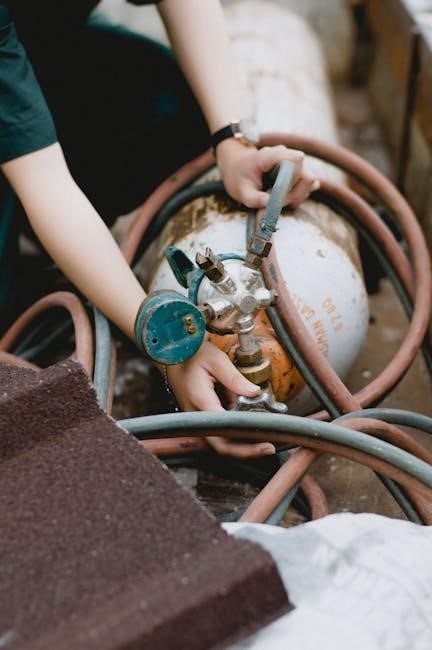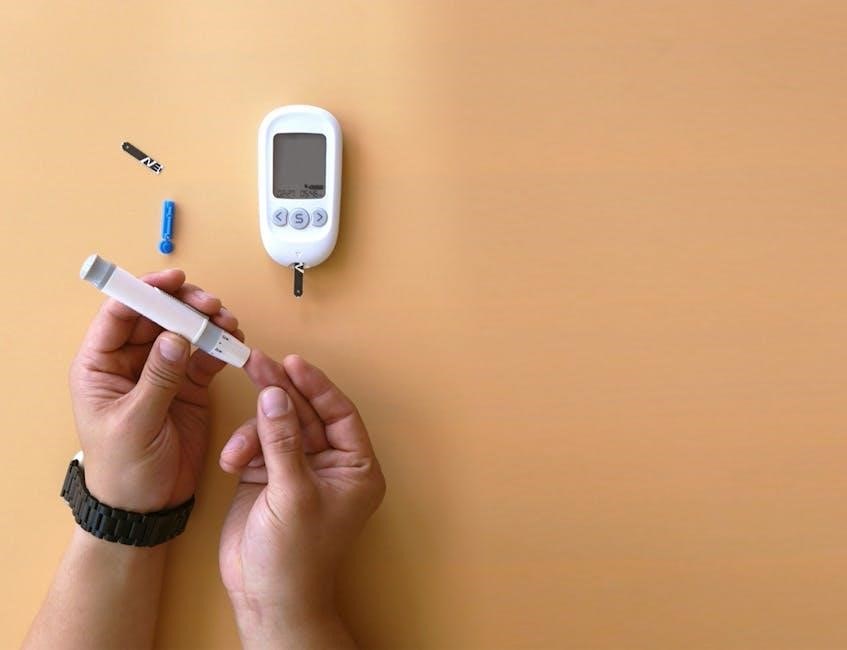Homedics Blood Pressure Cuff Manual: A Comprehensive Guide
Welcome to your comprehensive guide to the Homedics blood pressure cuff! This manual provides essential information for accurate blood pressure monitoring at home. We’ll explore setup, usage, troubleshooting, and maintenance, ensuring you get the most from your device.
Homedics blood pressure monitors offer a convenient way to track your cardiovascular health from the comfort of your home. These devices are designed for non-invasive measurement and monitoring of arterial blood pressure. They come equipped with detailed manuals for ease of operation and understanding. Proper use, following the instructions in the manual, is crucial for obtaining reliable and accurate readings. Regular monitoring can empower you to take proactive steps towards managing your blood pressure and overall well-being. Always ensure the cuff is used correctly, as described in the manual, for best results, whether it’s an arm or wrist model.
Understanding Your Homedics Blood Pressure Monitor
To maximize the benefits of your Homedics blood pressure monitor, it’s crucial to understand its features and functionalities. Familiarize yourself with the device to ensure accurate and consistent readings every time.
Key Features and Benefits
Homedics blood pressure monitors come equipped with several key features designed for user convenience and accuracy. Many models include one-button operation, making them easy to use. Some offer irregular heartbeat detection, providing valuable insights into your cardiovascular health. Voice assist features are available on certain models.
Memory storage allows you to track your blood pressure trends over time. The ergonomic design ensures comfortable and proper cuff placement. Detailed manuals guide you through the process, ensuring you get reliable readings, empowering you to manage your health effectively from home. These monitors are intended for non-invasive measurement.
Types of Homedics Blood Pressure Monitors (Arm vs. Wrist)
Homedics offers both arm and wrist blood pressure monitors, each with its own advantages. Arm monitors, like the BPA-3000-EU, are generally considered more accurate. They measure blood pressure on the upper arm, providing a reading closer to the heart. Wrist monitors, such as the BPW-200, are more portable and convenient.
However, wrist placement is crucial for accurate readings. You must position your wrist at heart level during measurement. Consider your lifestyle and needs when choosing between arm and wrist models. Arm cuffs ensure proper usage with clear instructions printed directly on them.

Getting Started: Initial Setup and Battery Installation
Before taking your first reading, proper setup is key. This involves installing batteries, typically four AAA batteries for arm models or two for wrist models, ensuring correct polarity as indicated inside the compartment.
Installing Batteries in Your Homedics Monitor
To begin, locate the battery compartment on the back of your Homedics blood pressure monitor. Open the compartment, usually by sliding or pressing a release. Note the required battery type; many models use four AAA alkaline batteries or two AAA batteries. Ensure you use the correct type for optimal performance.
Carefully insert the batteries, paying close attention to the polarity markings (+ and -) inside the compartment. Incorrect battery placement can prevent the monitor from working. Once the batteries are correctly installed, close the compartment securely. Your monitor is now ready for its initial setup and use.
Preparing for Your First Reading
Before taking your first blood pressure reading, it’s important to prepare properly. Avoid eating, drinking caffeinated beverages, smoking, or exercising for at least 30 minutes beforehand. Find a quiet and comfortable place to sit, ensuring your back is supported and your feet are flat on the floor.
Remain seated and relax for about five minutes to allow your body to reach a resting state. This will help ensure an accurate reading. Position your arm on a flat surface at heart level. Make sure your arm is bare; remove any tight-fitting clothing that could constrict blood flow. You are now ready to take your first measurement.

Taking Accurate Blood Pressure Readings
Achieving precise blood pressure readings requires careful attention to detail. This section provides guidance on proper cuff placement, body positioning, and step-by-step instructions to ensure reliable results every time.
Proper Cuff Placement and Positioning
Ensuring accurate blood pressure readings begins with correct cuff placement and body positioning. Sit quietly and relax, placing your elbow on a flat surface. The Homedics blood pressure monitor is designed for upper arm placement. Follow the instructions printed on the arm cuff to ensure correct usage. The cuff should be snug but not too tight, allowing space for one finger. Position the cuff directly above the elbow, aligning it with your heart level. Maintain a comfortable and supported posture throughout the measurement process. Proper placement contributes significantly to reliable blood pressure readings;
Following the Step-by-Step Instructions for Measurement
To obtain a blood pressure reading with your Homedics monitor, begin by ensuring proper cuff placement. Once the cuff is correctly positioned, press the start button to activate the monitor. The device will automatically inflate the cuff. Remain still and silent during the inflation and measurement process. The monitor will then display your systolic and diastolic blood pressure readings, along with your pulse rate. Record your readings in a log for tracking purposes. If irregular heartbeat detection is available, the monitor will indicate if an irregularity was detected during measurement. Consult your healthcare provider for any concerns.

Understanding Blood Pressure Readings and Indicators
Interpreting blood pressure readings involves understanding systolic and diastolic numbers. Familiarize yourself with blood pressure categories. Also, recognize the irregular heartbeat indicator, consulting a doctor if it appears frequently during measurement.
Interpreting Systolic and Diastolic Numbers
Understanding your blood pressure readings is crucial for managing your health. Blood pressure is measured with two numbers: systolic and diastolic. The systolic pressure (the top number) indicates the pressure in your arteries when your heart beats. Diastolic pressure (the bottom number) measures the pressure when your heart rests between beats. These values, displayed on your Homedics blood pressure monitor, are measured in millimeters of mercury (mmHg).
Refer to your Homedics manual and consult with your healthcare provider to understand what your specific systolic and diastolic numbers mean in relation to established blood pressure categories.
Recognizing Irregular Heartbeat Detection
Your Homedics blood pressure monitor may be equipped with irregular heartbeat detection. This feature can identify potential irregularities in your heart rhythm during blood pressure measurement. If an irregular heartbeat is detected, a specific symbol, as detailed in your Homedics blood pressure cuff manual, will typically appear on the monitor’s display. This symbol does not replace a professional medical diagnosis.
Consistent detection of an irregular heartbeat warrants a consultation with your physician. They can perform further evaluation and determine the underlying cause. Remember, the Homedics monitor is a screening tool, not a definitive diagnostic device.
Troubleshooting Common Issues
Experiencing problems with your Homedics blood pressure cuff? This section addresses common issues like error messages, inaccurate readings, and cuff inflation problems. Find solutions and tips to ensure proper functionality of your device.
Addressing Error Messages and Inaccurate Readings
Encountering error messages or inconsistent blood pressure readings? First, ensure the cuff is correctly positioned, as improper placement can lead to inaccuracies. Refer to the manual’s instructions for precise arm cuff application. Check the batteries; low battery power can cause errors. Clean the cuff carefully, as recommended in your Homedics manual.
If issues persist, avoid using the device on extremities other than the arm. The device is designed specifically for the arm. Also, be sure to remain still, relaxed, and quiet during the measurement. Contact Homedics customer support if problems continue.
Cuff Inflation Problems and Solutions
Experiencing difficulties with your Homedics blood pressure cuff inflating properly? Ensure the air hose is securely connected to both the cuff and the monitor. Inspect the cuff for any visible damage, leaks, or obstructions that could impede inflation. Double-check that the cuff size is appropriate for your arm circumference; an ill-fitting cuff can cause inflation issues.
If the monitor attempts to inflate but fails, replace the batteries, as low power can affect the pump’s performance. If the problem persists, consult the troubleshooting section of your Homedics blood pressure monitor instruction manual for further guidance.
Care and Maintenance of Your Homedics Blood Pressure Cuff
Proper care ensures accurate readings and extends the life of your Homedics blood pressure cuff. Regular cleaning and correct storage are crucial. Follow the manufacturer’s recommendations for optimal performance and longevity.
Cleaning and Storage Recommendations
To maintain your Homedics blood pressure cuff, gently clean the monitor and cuff with a soft, damp cloth. Avoid using abrasive cleaners or submerging the device in water. Ensure the cuff is completely dry before storing. Store your blood pressure monitor in a cool, dry place, away from direct sunlight and extreme temperatures.
Proper storage protects the device’s sensitive components and helps maintain its accuracy. Keep the cuff neatly folded or rolled to prevent damage. Following these simple cleaning and storage tips will help extend the life of your Homedics blood pressure monitor and ensure reliable readings.
Ensuring Longevity of Your Device
To ensure the longevity of your Homedics blood pressure monitor, regular maintenance is crucial. Always use the correct type of batteries, replacing them when the low battery indicator appears. Avoid dropping or subjecting the device to impacts, as this can damage internal components. Regularly check the cuff for wear and tear, replacing it if necessary, to maintain accurate readings.
Handle the air tube with care, avoiding kinks or excessive bending. When not in use, store the monitor in its protective case or a safe place. By following these guidelines, you can significantly extend the lifespan of your Homedics blood pressure monitor.

Where to Find the Homedics Blood Pressure Cuff Manual
Locating your Homedics blood pressure cuff manual is simple. Explore online resources for downloadable PDFs, or contact Homedics customer support for assistance. Your manual ensures proper device usage and maintenance.
Online Resources and Downloads
Finding the Homedics blood pressure cuff manual online is convenient and straightforward. Start by visiting the official Homedics website, where you can often find a dedicated support or downloads section. Look for your specific blood pressure monitor model number, such as BPA-3000-EU or BPW-200, to locate the corresponding manual. Many online retailers that sell Homedics products also provide links to the manuals on their product pages. Websites like ManualsLib offer a vast library of manuals, including various Homedics blood pressure monitor models. These digital resources provide easy access to instructions, troubleshooting tips, and maintenance guidelines, ensuring you can properly use and care for your device.
Contacting Homedics Customer Support
If you need assistance beyond the manual or online resources, contacting Homedics customer support is a valuable option. You can typically find their contact information, including phone numbers and email addresses, on the Homedics website or within the product documentation. Be prepared to provide your blood pressure monitor’s model number and a clear description of the issue you’re experiencing. Homedics’ customer support can assist with troubleshooting, warranty information, and replacement parts. For complex issues or if you require personalized guidance, reaching out to their support team ensures you receive expert help tailored to your specific needs and device. They aim to provide solutions and ensure your satisfaction with their products.



